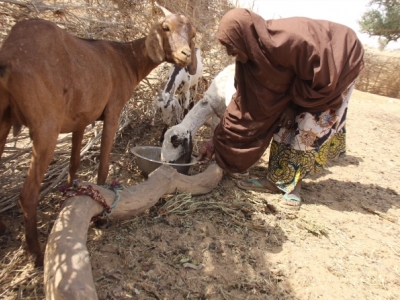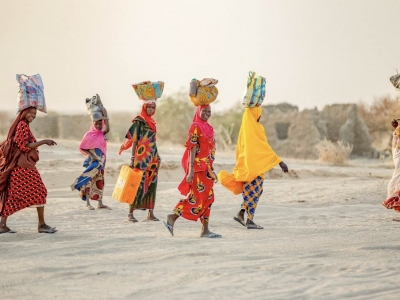Advancing medium and long-term adaptation planning and budgeting in Niger
Project Overview
The project activities aim to strengthen adaptation-related prioritization and planning, financing and capacity development, supporting Niger in integrating climate change into medium- and long-term development planning and budgeting through the NAP process. Reducing Niger’s vulnerability to climate change requires greater investments and greater integration of climate change adaptation and disaster risk reduction into ongoing development programmes. The project works in synergy with other initiatives. It supported the National Disaster Risk Prevention and Management Facility to integrate climate change into its strategy, and the development of the NDC through gender studies and climate scenarios. The project also enables the implementation of Niger's national climate change strategy. The project addresses the main challenges in integrating climate change adaptation into planning and budgeting in Niger, as identified in its NAP Stocktaking Report.
Project Details
The exposure to climate risks, associated with its position as a Sahelian landlocked country, makes Niger one of the most vulnerable countries in the world. The 42.8 percent of the GDP, and 80 percent of the workforce are employed in the agriculture, forestry and livestock sectors. Climate change is expected to worsen climate risks over the next decades, with an increase in the frequency of droughts, resulting in a decrease in agricultural production, an increase in grazing pressure on pastoral ecosystems, and consequently soil erosion on a mass scale, threatening food security; and floods resulting from the heavy rainfall. The country was ranked 188 out of 188 in the UNDP’s Human Development Index in 2015, with 89.8 percent of the population living in multidimensional poverty.
The foundations for the NAP process have been built through the preparation of the National Adaptation Programme of Action (NAPA) in 2006 with support from UNDP and the Global Environment Facility (GEF). The NAPA identified urgent and most immediate needs in seven vulnerable sectors and fourteen priority adaptation interventions. The National Climate Change Policy (PNCC) adopted in 2013 provides the overall strategic framework to tackle climate change. To move beyond urgent and immediate needs, and towards a medium-term approach, Niger intends to integrate climate change into medium- and long-term development planning and budgeting through the NAP process, under its obligation to the UNFCCC and as stated in its PNCC. This process will contribute to ensuring that the country’s long-term development strategy - starting with its Sustainable Development and Inclusive Growth Strategy (SDDCI) and its National Economic and Social Development plans - be based on an understanding of climate-related risks and opportunities for inclusive growth and sustainable development.
Niger has been advancing its NAP process by conducting a preliminary stock take of relevant initiatives on climate adaptation and mainstreaming to identify gaps and needs. A NAP roadmap was subsequently drafted, which outlined the main steps and timeline of advancing the NAP process in Niger.
This project will be steered at country level by the Executive Secretariat of the National Council of Environment for Sustainable Development (SE/CNEDD), which is the coordinating body for all Rio Conventions and climate change-related initiatives and the National Designated Authority to the GCF. It will closely engage the Ministry of Planning and the Ministry of Finance, as well as key sectoral ministries, national training and research institutions and civil society, including the private sector. It will closely coordinate with other related initiatives such as the GEF-LDCF adaptation planning in the water sector project, the EU-funded PARC-DAD and the World Bank Pilot Programme for Climate Resilience. The project is aligned with the “Nigeriens Nourish the Nigeriens” Initiative (Initiative 3N), the Sustainable Development and Inclusive Growth Strategy (SDDCI), the National Economic and Social Development Plan (PDES), and the National Climate Learning Strategy.
Project updates
The draft NAP was developed through consultations (ministries and technical institutions, representatives of communities, the private sector, religious and traditional leaders, women's and youth organizations, civil society and media), combined with an analyses of climate data and vulnerability to climate change and assessments and capacity building of stakeholders. 25 adaptation options were identified and prioritized for the five sectors (livestock, health, transport, forestry and wetlands) and the draft NAP document was enriched and validated through regional workshops; the final validation through a national workshop is scheduled for 2022.
In collaboration with other entities, including the Executive Secretariat of the National Environment Council for Sustainable Development (CNEDD), a monitoring and evaluation system is being set up to track the progress of climate change adaptation initiatives.
In addition, a communication and knowledge management strategy has been developed to disseminate the results of the NAP process.
News
Key Results and Outputs
Output 1: National mandate, strategy and steering mechanism are in place and gaps are assessed and addressed
Output 2: Preparatory work for the NAP undertaken to develop a knowledge-base and compile a NAP
Output 3: NAP implementation facilitated
Output 4: Mechanisms for Reporting, Monitoring and Review of NAPs and adaptation progress in place
Output 5: Funding strategy for the NAP and CCA is available

 Niger’s National Adaptation Plan presents its path to climate resilience
Niger’s National Adaptation Plan presents its path to climate resilience  Building capacity in Niger to enable climate change adaptation
Building capacity in Niger to enable climate change adaptation